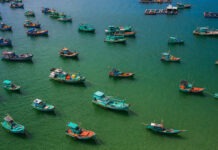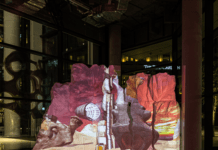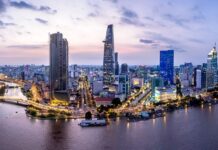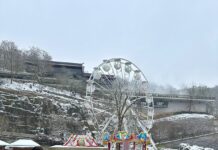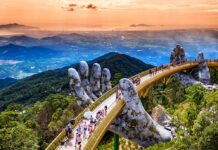Which place lifts your spirits when you remember about the visit? We asked a group of seasoned travelers to describe their happy places, the destination they conjure in times of stress, they places they would like to dream of running away to. The place could be exotic or ordinary, its allure could be emotional or aesthetic; it could be reminiscent of home, or the polar opposite. Here are some of the choices that beckon travelers to lay down their burdens and put their cares at bay.

Castaway Island, Fiji — embodying the heart and soul of South Pacific: The Island’s 70 hectares are covered in tropical rain forest, surrounded by white sand beaches, vibrant coral reefs and azure waters. It would probably take you around two hours to stroll along the shoreline around the island and chances are the only people you meet along the entire way will be bare-chested young men standing knee-deep in the shallows at the edge of the reef casting their nets. With the morning sunlight shimmering on the swirling strands of their nearly three meters cast net; it is a view worth watching as they unfurl their nets above the water in a huge lasso. Eventually, when you find a nice spot and swim out to settle your face in the water and breathe through the snorkel, the sight of a psychedelic array of colorful fish floating by the coral is a sight you will treasure. It will make you wonder what kept you away so long from this island that embodies the heart and soul of the South Pacific.

Halibut Cove, Alaska — summer apparition forgotten by time
To reach Halibut Cove you will need to fly to Anchorage, the northernmost city of the United States, rent a car, then drive to Homer, a nice quirky hamlet on the Kenai Peninsula where eagles fly, bears swat at leaping salmon and the halibut found in Kachemak Bay might outweigh you. But Homer is only the jumping-off spot for Halibut Cove, which lies about 10km across Kachemak Bay. Once a fishing settlement, Halibut Cove, which lies on the island of Ismailof is now an artists’ colony and a summer apparition.

You catch the twice-a-day ferry from Homer and arrive at a compound that includes two art galleries and a lone restaurant called the Saltry. The buildings are on stilts above the shallows and connected by a boardwalk. No roads, no cars and only a floating post office. It is estimated that the summer population stands at 85 to 95, which during winter falls to about 14. Anyway, summer is brilliant. The Saltry, open only in summer, serves locally farmed oysters, fresh-caught black cod, salmon and halibut. — about 100 meals a day, lunch and dinner.

Southern Alps, New Zealand — the peak of solace
If you are in search of solace, nothing beats the view of snow-clad peaks piercing clouds against the backdrop of a luminescent blue sky. Covering nearly two-thirds of New Zealand’s South Island, the Southern Alps run from north to south, from wine country to the jagged battlegrounds of Middle-earth and fiords of the south. With spaceship-like clouds glowing overhead as sentinels, you can drive past green fields of countless sheeps, cows and azure lakes of melted ice, with the steely rock of the mountains keeping you company. The sheer size of the pinnacle is always a reminder of personal insignificance. At Mt. Cook, the summit of the range, you can rent a ski-equipped plane to fly onto a glacier 3,700 meters in the sky. As you land on the glacier, the ice will crunch beneath your boots, the indescribable scent of pure clean air chilling your noses. You feel truly on top of the world. When stress plagues you life, remembering the view of deer grazing in meadows guarded by the snow-dusted mountains in the distance is bound to let you know that better times lie ahead.

Turning Off Niagara Falls
Niagara Falls is a set of three waterfalls on the United States/Canada border. Collectively, they have the highest flow rate of any waterfall in the world, with over 2,400 cubic meters or about 2,270,000 liters of water going over the edge every second. Horseshoe Falls is the largest of the three, while American Falls and the relatively small Bridal Veils Falls are the other two. In the late 1960s, American Falls was exhibiting some rock build-up at its base, caused by decades if not centuries or millennia of rockslides. Officials were concerned that a rock buildup could cause American Falls to turn into rapids, as the upper shelf’s floor tumbled below. But surveying the erosion was impossible given the massive amount of water flowing over the edge every second. So the U.S. Army Corp of Engineers needed a work-around solution — shut off American Falls.
Looking at a way to turn off the water flowing over the falls, the task force decided to build a dam upstream of the falls, diverting the water toward Canada and ultimately to Horseshoe Falls. In a few weeks American Falls was bone dry; it was so dry, in fact, that the engineering team needed to pipe water back into the falls — albeit only a little bit — in order to keep the river bed irrigated and moist. The ‘dry Falls’ also made for a neat, once-in-a-lifetime tourist and photo opportunity, as for a short period during cleanup visitors were allowed to walk onto part of the temporarily dry river bed.
The Army Corps of Engineers finished the cleanup work and to get the water flowing and falling again, simply blew up the temporary dam. A few months later, the authorities who ordered the survey of the dry waterbed opted against restructuring the rock bed. Instead, they decided to let nature take its course — in this case, both literally and figuratively.
Early in 2012, aerialist Nik Wallenda crossed Niagara Falls on a high wire suspended nearly 60 meters above the water’s surface. The walk took about 25 minutes and covered a distance of about half a kilometer. And while Wallenda’s distance was the longest traversed by a Niagara-bound tightrope walker, his feat was not the first. In 1859, Charles Blondin successfully made a 340 meter walk across a wire suspended about 50 meters above the water. And he would return to do it again, a few times with different theatrical variations, including blindfolded, in a sack, trundling a wheelbarrow, on stilts, carrying a man (his manager, Harry Colcord) on his back, sitting down midway while he cooked and ate an omelet and standing on a chair with only one chair leg on the rope.


